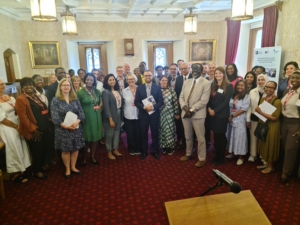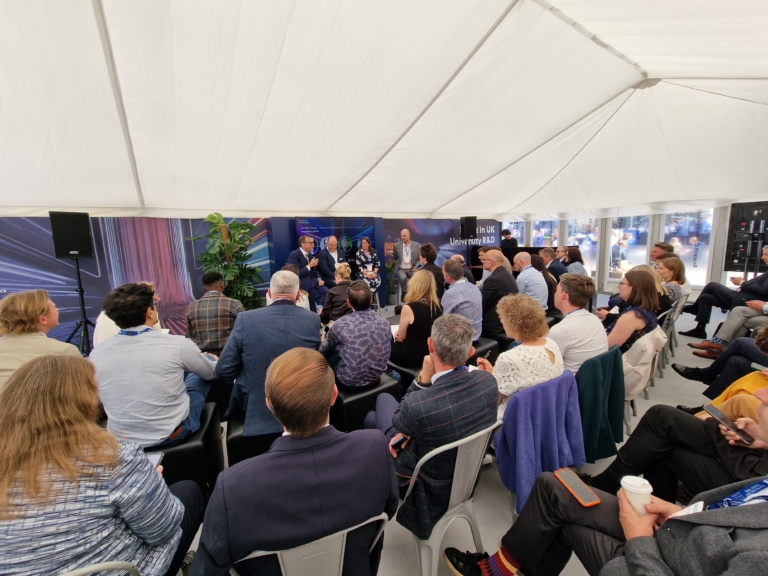As part of our 10 year anniversary campaign we will be hearing from project teams from across the MI partnership who will be sharing their thoughts on what the next decade of collaboration will bring. In this month's guest blog, MI Flow Cytometry representative Dr David Onion shares his thoughts on the future direction of one of Midland Innovation’s longest standing networks.
A revolutionary science driving future advancements
Flow cytometry, a powerful tool for analysing individual cells, has already revolutionised various fields of science, but over the next 10 years it will continue to play a major role in many areas, including:
Understanding and analysing immune cells – flow cytometry will continue to be a cornerstone of immunological research and clinical diagnostics, driving significant advancements in understanding immune responses and disease mechanisms.
Water quality and microplastics – Advancements in flow cytometry technology and integration with AI and computational techniques will improve the accuracy and sensitivity of water quality and microplastic analysis, contributing to better environmental protection and public health.
Small particle science – Advancements in technology are set to improve the analysis of extracellular vesicles (EVs), nanoparticles, and small bacterial cells by simultaneously measuring their size and biophysical properties using fluorescent probes.
Our vision for 2035: the key to future success
The Flow Cytometry group leads in collaborative practices and has an established culture of equipment sharing, training, and education. This solid foundation, built over nine years of collaboration, positions the network well to advance confidently into the next decade.
To stay at the forefront of advancements, our group has outlined a vision to deepen and enhance collaboration to meet future goals, identifying three key strategies to address upcoming challenges:
1. Nurturing the next generation
Our group is committed to encouraging and nurturing the next generation of Flow Cytometry researchers, ensuring a rich talent pool for the future. We have long paved the way in this regard, offering opportunities for PhD students and early career researchers (ECRs) to present their work at the annual flow cytometry conference.
We are now in an excellent position to build upon this foundation and plan to develop an outreach program to inspire the next generation of flow cytometrists. By equipping young researchers with the latest techniques and knowledge, we will create a pipeline of skilled professionals ready to drive advancements in flow cytometry. This future-proofing approach will sustain the group’s relevance and impact in the scientific community.
Alongside this work, we will continue to work diligently on creating a programme of continuous training and mentorship, supporting our members in developing their skills at all stages of their careers. This commitment and focus on lifelong learning and career development will ensure the group remains resilient and adaptable to future challenges.
2. Harnessing the power of emerging technologies
Integrating flow cytometry with genomics, imaging, and other technologies is anticipated to significantly enhance research capabilities and open new avenues for discovery. Future advancements may include technologies such as spatially resolved, single-cell proteo-genomics. Additionally, the growing power of AI is expected to enable faster and more in-depth analysis of results.
The culture of equipment and expertise sharing in the flow cytometry group enables researchers across the region to rapidly benefit from emerging technologies. Moving forward, the group aims to maximise interdisciplinary learning through effective collaboration with related departments and disciplines across our institutions and the wider Midlands Innovation network. These collaborations offer numerous opportunities, such as working with engineering colleagues who are experts in optics and photonics to develop novel or bespoke solutions to research challenges. Alternatively, partnering with mathematicians and bioinformaticians to apply machine learning or AI can empower our data analysis pipelines.
3. Deeper, wider collaboration
Industry partnerships help bridge the gap between cutting-edge research and practical application, ensuring that the group’s work has real-world applications. Additionally, these collaborations provide access to advanced technologies, funding, and resources that enhance the scope and quality of research. The MI Flow group has long championed close links with industry, and this will continue to be a key strategy over the coming decade.
An ongoing commitment to developing annual conferences and workshops will further facilitate communication, collaboration, and the sharing of best practices. These events will provide opportunities for researchers to present their work, exchange ideas, and develop partnerships.
Beyond industry partnerships, the MI Flow group aspires to achieve closer alignment with local and national stakeholders, including funding bodies. These collaborations will help align the group’s research goals with public needs and policy priorities, ensuring broader societal impact.
By bringing together industry, academia, and regional and national stakeholders, the group aims to create a robust framework capable of tackling complex scientific questions. Collaboration between universities, research institutions, and companies will facilitate the sharing of resources and expertise. This collective effort will enable us to address challenges that individual technologies alone cannot solve, fostering a collaborative environment for scientific breakthroughs.
Embracing whatever the future may hold
Considering the direction of our group over the coming decade has been a useful exercise. We are proud of the progress we have made to date, and we are confident that the principles we uphold will serve us well in the future. While we cannot predict exactly how the next 10 years will unfold, we are certain that our collaborative spirit will remain. Our strength lies in our collective and open approach—it is the thread that links all our efforts, enabling us to tackle complex scientific challenges and drive meaningful progress.
By continuing to challenge each other and push the boundaries of discovery, we can ensure that our work has a lasting impact. Together, we will forge ahead, confident in our ability to make significant contributions to the field of flow cytometry. The future is promising, and our collective efforts will ensure that our work continues to drive meaningful advancements and create lasting change.






